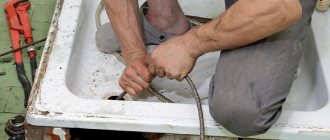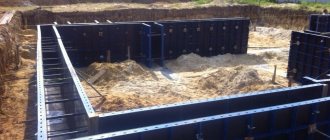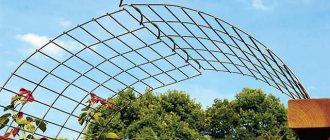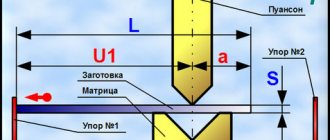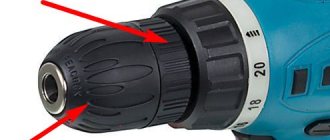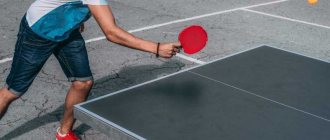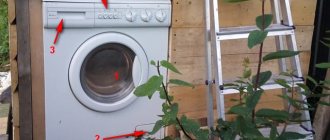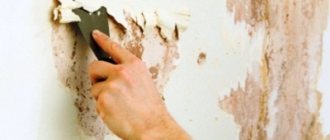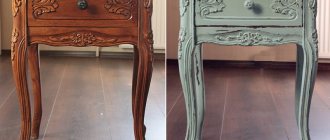Gypsum fiber sheet is moisture resistant and fireproof. And of course, it is quite durable and hard. It has many properties similar to drywall. But thanks to its better composition, it has much more advantages for leveling the surface.
GVL is an absolutely environmentally friendly material. Almost entirely gypsum fiber consists of natural components. And thanks to this, the ceiling will be safe and the room will immediately have a favorable microclimate. This greatly affects the overall experience of everyone in the room. If the moisture level is high, the gypsum fiber will absorb it completely, and if necessary, it will give it back.
It is laid on the floor, walls and ceiling. Since it retains excellent heat and prevents excess noise from the outside from entering your room. Craftsmen also use it to install window slopes; it perfectly levels the floor. Its main advantage is dry screed. And thanks to this, the time for repair work is reduced several times, and the amount of construction waste is reduced.
Even if you decided to do all the home repairs yourself, this material is perfect for beginners. It is easy to install, the installation technology is quickly mastered, and can be combined with additional layers of floor insulation.
The similarity between gypsum plasterboard and plasterboard lies in the name; the main material is building gypsum. And that is all. It has many features that determine its qualities:
- When it is created, it is reinforced with dissolved cellulose. This makes the material so strong that it can withstand extreme conditions. And only if you try really hard, cracks will appear on it. But in everyday conditions this is practically impossible;
- gypsum fiber sheets are absolutely homogeneous. Due to this, it has a high density. Which increases its strength. At the same time, it perfectly retains heat transfer without additional layers of other materials. Also, this density guarantees complete sound insulation;
- its composition and uniformity make it possible not to cover it on top with a tightening or securing element, like plasterboard. This property allows you not to cover it with numerous layers of finishing;
- Thanks to its unique composition, it is almost impossible to burn.
Considering that any box can be easily made from gypsum fiber, the walls become stronger and are not able to catch fire, it is impossible to bend it. While this is typical for drywall. And therefore, if the design has fixed shapes, it will not fit.
But if high moisture resistance is required, for example, for a floor, GVL is perfect. For this purpose, a special type is used - moisture resistant. It is laid on the floor in two layers. And then it cannot be broken and the cold will not penetrate the room. During installation, an absolutely flat, ideal surface is created. And the humidity in a room with such a floor can reach as much as 70%. And you need to know exactly how to cut gypsum fiber boards.
How and how to cut gypsum fiber board at home
Content
Gypsum fiber sheet or GVL is actively used in finishing work.
This material was created later than drywall, so it has not yet managed to become so popular. Gypsum fiber sheets have a special composition, which provides them with completely new characteristics of strength and fire resistance, exceeding gypsum board several times. GVL is considered an indispensable material when creating bulk floors, the initial finishing of walls, ceilings, as well as in the process of constructing various boxes. In the process of working with such a valuable material, only one important question arises - how to cut gypsum fiber board?
Features of gypsum fiber sheets
To understand what and how to cut gypsum fiber, you must first understand the essence of this material itself. The production of gypsum fiber sheets, like plasterboard, is carried out from building gypsum, which limits their similarities. GVLV slabs are distinguished by the following features:
- Dissolved cellulose is used as a reinforcing material,
- The material is characterized by absolute homogeneity of structure,
- No coating is used on top,
- The material is completely non-flammable,
- The density of the material is higher than that of traditional drywall.
This building material is produced by many companies, but the sheets manufactured by Knauf have earned the greatest demand. If you take plasterboard and gypsum fiber sheets from this company for comparison, you can understand how ideally complementary they are to each other, and when used as finishing materials in the renovation process, you can only get a positive effect.
Despite the fact that gypsum fiber board is an excellent material for making any box, and the walls will be strong and practically non-flammable, this material is different in that it cannot be bent in the same way as drywall. It turns out that it is not suitable for installing structures with rounded shapes and complex elements.
The use of gypsum fiber sheets is advisable on the floor, in dry screeds, where there is expanded clay, where they show all their best qualities. When using them in the process of constructing a subfloor, you can get excellent results. Floor elements obtained by gluing a pair of GVLV sheets with a total thickness of 20 mm have the following useful properties:
- They are resistant to loads, that is, they do not break during operation,
- Resists the penetration of cold,
- Perfect surface smoothness
- GVL can withstand humidity up to 70%.
Description of material
They produce products that create a hard coating only in dry rooms and materials that work in humid conditions.
In both cases, the panels are not destroyed by sunlight or atmospheric chemicals. Types of gypsum fiber boards produced :
- GVL is a common material, not resistant to water;
- GVLV - sheets have moisture-proof qualities.
The moisture-resistant option is installed in production workshops where processes involving the release of wet vapors take place, while sanitary treatment is allowed. The introduction of hydrophobic additives into the gypsum mass allows its use in bathrooms, residential and public kitchens.
Pros and cons of GVL
When heated, it does not emit harmful components into the atmosphere, therefore it is safe for humans
Quick to install, no curing required, no debris during installation
Provides a comfortable indoor climate because it “breathes” (passes steam and air)
Provides additional protection from external noise
Does not require mandatory surface finishing with putty and reinforcing mesh
Does not burn, because there is no cardboard shell on the surface
Heavy weight compared to drywall, so a reliable frame is required
When installing without a frame, high-quality gypsum glue or dry cement-based adhesive mixtures are required
The difference between GVL and GKL
The finishing material was created later than drywall, so it is devoid of its disadvantages, but has acquired many advantages. The first advantage, compared to gypsum plasterboard, is increased strength and longer service life as a leveling layer.
Differences in installation and design:
- Drywall has many types of bevels that are designed to seal seams, but do not allow straight sides. GVL has varieties: PC - straight edges and FC - a type of folded edge.
- Sheets of plasterboard are placed on the frame without gaps between them, and gypsum plasterboard panels are placed with a gap of 5 - 7 mm (for ease of sealing the seam).
- Racks under gypsum boards are mounted with a gap of 600 mm, and vertical elements of the sheathing under gypsum fiber boards - with a gap of 603 mm, so that it is possible to form a gap between the sheets.
- When installing a two-layer coating of partitions, plasterboard boards of the first and second tiers are secured to the profile with self-tapping screws. GVL allows you to fix self-tapping screws not only in racks, but also in the panels of the previous layer.
- Drywall is not used on floors as a rough layer, because it does not have enough strength, and gypsum fiber board can withstand operational loads in the room.
When installing moisture-resistant fiber boards, leave an installation gap of 5 mm between the ceiling and wall. They are joined to the floor with a gap of 10 - 12 mm. The screws are twisted at an angle of 90°, they go to a depth of 1 cm in the profile.
Install the material with the front side facing out; it can be identified by a flat surface without rough protrusions. A marking consisting of letters and numbers is applied to the reverse side. There are markings on the face for drilling with self-tapping screws in the form of dots.
What is required to work with GVL?
Typically, craftsmen who independently prepare and install drywall believe that working with gypsum plasterboard is carried out in a similar way.
However, quite certain troubles may await them here. With all the available strength characteristics, gypsum fiber sheets demonstrate increased brittleness to fracture, and therefore break easily. For this reason, GVL sheets do not bend like plasterboard.
Before cutting gypsum plasterboard, you need to figure out what tools are suitable for this?
So, the tools that can be used to cut gypsum fiber boards:
- A sharp construction knife, the thickness of which is at least 12 mm. Because the blades will dull quickly, they will need to be replaced frequently.
- There is a special hacksaw for gypsum boards, with which you can cut the material with virtually no dust.
- The use of a grinder or a circular saw is advisable only in well-ventilated areas, unless the end really justifies the means. This is a very noisy and dusty method, but of all it is the fastest. If you decide to choose such a tool, be sure to use respiratory and eye protection.
- A jigsaw with a built-in vacuum cleaner is the most ideal option, especially when using a wood saw with a tooth pitch of 4 mm. However, in this case quite a lot of dust is generated, which requires the use of a respirator and safety glasses.
Once you decide what to use to cut gypsum fiber board, you must be careful and careful when working with these materials. When using a special hacksaw or cutter for work, it is recommended to proceed as follows:
- The GVL sheet is marked as it needs to be cut,
- The marking line is used to attach a rule or straight ruler to it,
- The knife needs to be drawn across the sheet so many times that a groove is formed on it with a depth of at least 2/3 of the thickness of the sheet,
- A special strip should be placed under the formed cut line,
- Next, using a sharp upward movement, you need to carefully break the sheet.
You can watch the corresponding video before you start cutting.
Gypsum fiber sheets are characterized by the formation of smooth edge edges, so there are usually no problems with joining. If minor adjustments are required, you can use a roughing plane. To obtain a fold, a chisel or a shoe-cutter is best suited. If the volume of work is quite large, then it is recommended to use a router. When using a groove cutter with a step of 3-4 mm, you can complete all the necessary work in 2-3 approaches.
Sawing gypsum fiber supersheet from Knauf
The cutting option using hand tools, such as a knife or cutter, is most often used. The power tool will generate dust. For a small amount of work, you can get by with simple devices.
Sequence of work:
- lay the sheet on a flat plane, you can cut the top sheet on the package without removing it;
- markings are applied to the panels, a rule is applied along the line, and it is pressed well;
- cut along the line with force several times, trying to immerse the blade evenly;
- a block is placed under the cutting line;
- The edge of the slab is lifted, broken along the line, dividing it into parts.
If you need to make a fold on a straight edge, use a cutter knife or chisel. For large volumes they work with a router with a 4 mm groove cutter. To fit pieces of gypsum fiber board in place, a roughing plane is used.
What is the best way to cut gypsum fiber board?
What is the best way to cut gypsum fiber board in large quantities? Which tool is more suitable for this in terms of reliability and economy?
In large ones - which ones?
Mobile option, landline?
If it’s mobile, are there many options besides a jigsaw and a manual circular saw?
In large quantities it is easier to break it along the cut. I laid floors on 40 m2 in two layers. First I cut it with a jigsaw - there was too much dust. In the end, I decided that it was necessary to cut gypsum fiber board where a good, even cut was required, for example on slopes.
Well, for example, to cut Knauf floor elements (GVL in two layers). Options: manual circular saw - a lot of dust, precision cutting? grinder 115 - also a lot of dust jigsaw - less dust, but lower cutting speed and reliability of the device? Break along the cut? HOW.
The most effective way is with your hands. Quite seriously. I also cut with a jigsaw first. There's a lot of dust. The files are flying. Those that don't fly don't stand like children.
The technique is simple - cut the floor element from 2 (!) sides, place it on the edge of the table and break it. Single-layer GVL can be cut on one side. The edge is trimmed with a roughing plane.
Do a search, they have written a lot about these things.
Andy_T wrote: The most effective way is with your hands. Quite seriously. I also cut with a jigsaw first. There's a lot of dust. The files are flying. Those that don't fly don't stand like children.
Of course, I didn’t break the two-layer gvl in this way, it just never occurred to me. It seems to me that the result should definitely turn out to be bad - I wouldn’t do that myself, but today I’ll try to break a piece like that.
As for the dust, I don’t know where any dust is, I periodically cleared the cutting line with a brush and that’s it.
Novosel wrote: Well, for example, to cut Knauf floor elements (gypsum fiber board in two layers).
There is quite a bit of dust, there are no problems with reliability. It’s better to take cheap files for 20-25 rubles for wood with a tooth pitch of 4mm. They sit down pretty quickly. For 30 sq m it took me about three or four - quite budget-friendly. Sawing without a pendulum is a chore, but with a pendulum it is more fun. It’s clear that a jigsaw can not only make straight cuts.
You can adjust the last sheets of the row so that the edge band is pressed with a roughing plane - it costs 150-200 rubles, spare floats for it cost 40 rubles each. But no more than a couple of millimeters - the gvl is difficult to cut, if you need more, it’s better to cut it with a jigsaw. In addition, the plane float shrinks very quickly. It’s just somehow interesting - it seems sharp to the touch and it planes plasterboard perfectly, but it just smoothes gypsum fiber and that’s it.
It may be necessary to make a fold for various reasons - I messed up there, the sheet is broken, for design reasons, etc. It is convenient to make them using a router along a guide with a thin groove cutter (3-4mm in 2-3 passes). If you don’t have a router, you can get by with a shoe knife and a chisel (or chisel) - but this is a tedious task.
About the circular: there will be noise, there will be dust - there will be a guard. In addition, the discs will quickly become dull, and they are more expensive than jigsaw files. And the cutting operation is not the most time-critical to bother with a shaitan saw.
How about a grinder? With a disk from a circular saw? By stone? But in any case, this is not a good option.
Application of GVL sheets in children's rooms
To guarantee the safety of the walls of the nursery, where our pranksters play, in the home gym, where children lead an active lifestyle, as well as in the hallways and closets, in which we most often store bicycles, scooters, skis, skateboards and other bulky items necessary for an energetic child development equipment, frame structures finished with gypsum fiber sheets will help.
What is GVL?
GVL is a pressed board made from a mixture of a gypsum connecting element and cellulose fibers evenly distributed in it, which plays the role of reinforcement. This material is quite strong, reliable, and has high fire-resistant and sound-proofing qualities. It is used not only for the construction of interior partitions and finishing of internal walls.
In addition, gypsum fiber sheets are widely used for finishing the slopes of door and window openings and as a finishing floor covering in rooms with normal and dry humidity conditions. And where they can be subject to cyclical wetting and drying, moisture-resistant sheets (GVLV) are used, which guarantee high resistance to moisture penetration.
Dimensions of gypsum fiber sheets
The most popular types of sizes are GVL and GVLV (moisture resistant): 1200 x 1200 x 10 mm and 2500 x 1200 x 10/12.5 mm. I note that the latter are more often used for finishing walls and ceilings. Thanks to its large format, there are significantly fewer joints on finished surfaces. Small-format sheets are more suitable for flooring, where the main thing is to create a more even base, and this is best done in small areas.
Table of typical sizes of gypsum fiber sheets
Pros and cons of gypsum fiber sheets
Pros:
- Due to the reinforcement with cellulose fiber, the material has increased strength.
- Light weight - a sheet with an area of 1 m2 and a thickness of 10 mm weighs only 12.5 kg; due to its low load, it does not create large loads for the load-bearing elements.
- Gypsum fiber sheets are environmentally friendly and fireproof.
- They are able to create a comfortable microclimate - they absorb excess moisture and release it when there is insufficient moisture in the room (for children with weak immunity, a comfortable microclimate is very important).
- Exclusion during finishing work of most of the inconvenient wet processes that are provided for when using traditional materials (plaster and masonry mortar, concrete block, brick).
Minuses:
The only downside that can be noted is that this finishing material is recommended for use only in heated rooms. But it is clear that the children's room will be heated, so as you can see, there are essentially no disadvantages to gypsum fiber board sheets.
So, gypsum board sheets go into the firebox? Of course, as you can see, gypsum boards are better than the popular gypsum board sheets (their popularity is more due to the fact that they appeared much earlier). However, it should be taken into account that the price of gypsum plasterboard is slightly higher, and therefore those home builders who count every penny can obviously lean toward gypsum board sheets, and this will not be too catastrophic a loss, because we have partitions, not floors.
And yes, it is also worth considering as a disadvantage the fact that gypsum fiber sheets do not bend as much as drywall. But this is not a problem at all - after all, we have partitions, and if suddenly an arched opening is planned, then the bending strip itself can be made from gypsum board - the strength will not suffer from this.
Characteristics of gypsum fiber sheets
To test the strength of GVL, KNAUF specialists carried out a number of tests. They attached a weight with a mass of 1 kg to a cable and hit it on a gypsum fiber partition. Taking into account the length of the cable and the mass of the load, the impact force was 12 kg, but there were no dents or cracks on the surface of the gypsum plasterboard. Only after the second blow, in the same place, was there a barely noticeable mark. So you don’t have to worry about the safety of gypsum fiber board walls, even if you have a future Olympic boxing champion growing up in your children’s room. Although, of course, this material has a tensile strength, it is still not brick or concrete.
Thermal insulation material placed in the GVL frame structure increases the sound and heat insulation of walls and partitions. The most optimal solution is to erect partitions 100 mm thick, filled with 50 mm mineral wool and double sheathing with 2 x 12.5 mm GVL. The sound insulation index of this GVL design is Rw = 56 dBA (according to GOST, for interior partitions it should be at least 41 dBA).
Therefore, the wall will be a sure barrier from extraneous sounds and noises. Even if there are ardent music lovers in the family, you are guaranteed peace and quiet.
Differences between GVL and GKL:
- gypsum fiber sheets are usually used in those rooms where high protection against impacts is required; it is much harder than plasterboard;
- thanks to the homogeneous composition of gypsum fiber board it is easy to saw regardless of direction;
- plasterboard is a flexible material, which is absolutely not typical for gypsum fiber;
- The environmental friendliness of GVL is much higher than that of drywall. And everything is achieved using its high density. It is practically indestructible. While gypsum plasterboard loses its properties over time, dust is formed, which can enter the respiratory tract;
- plasterboard is absolutely not suitable for laying on the floor, while gypsum plasterboard is capable of absorbing moisture and retaining heat when used in this manner;
- fire resistance is inherent in absolutely all types of gypsum fiber sheets. While drywall does not have this, there is only a special marking with this characteristic;
- GVL is absolutely not suitable for wall finishing if the finishing layer is wallpaper or oil paint.
The difference between the materials is such that despite the same base - building gypsum, their scope of application is different. When working with gypsum fiber board, you need to know exactly how to cut it.
Like GVL Knauf putty. Make a frameless installation
Stages of laying gypsum boards on the floor
The frameless method is rarely used for gypsum plasterboard sheets, but for indoor walls, plasterboard boards are the most preferable option. Installation using this method is carried out in the following sequence:
- If the walls are uneven up to 4 mm, the sheets must be glued directly to the wall surface using gypsum putty, which is applied in longitudinal layers in a fairly thin layer around the perimeter of the GVL board, after which the sheet is glued to the wall.
- If the unevenness is 4-20 mm, the sheets are laid using a special glue such as Perflix. The composition is applied to the GVL surface in the middle and along the perimeter of the plate in increments of 30-35 centimeters.
- If the unevenness is very large, from 20 to 40 mm, installation will be more difficult. First, with your own hands, using a special glue, 100 mm wide gypsum plasterboard strips are glued to the surface of the walls, and only then the slabs themselves are glued to them with gypsum putty.
READ How to Correctly Cut Ceiling Plinths in Corners
Installation using the frameless method proceeds as follows:
Drywall fastening diagram for glue.
- Installation should be carried out before laying the finishing floor. The room temperature should be from 10 ° C. The sheets themselves should be stored before work in the room where the installation will be carried out for two or three days. Humidity and temperature must be maintained throughout the installation period; For very wet rooms, such as bathrooms, it is better to use plasterboard moisture-resistant boards.
- If necessary, the walls must be prepared and cleaned of remnants of the old coating. If the surface is layered, measures should be taken to strengthen it. The wall is putty, it must dry, after which you can begin installation.
- After finishing the putty, the verticality of the walls and the presence of burrs must be adjusted according to the level of the structure (this depends on the choice of installation method). The surface is marked with the location of the plates. If necessary, the walls are treated with a primer.
- GVL plates are cut out, holes for switches and sockets are cut out in them. The height of each piece should be such that there is a gap of 8-12 mm at the bottom. After installing large slabs, small sections are installed at the bottom to close the gaps. For safety reasons, the sheets can be attached to the wall surface using self-tapping screws.
- GVL boards are glued to the wall using special compositions in accordance with the chosen method. This is done using a calibrated notched trowel; after applying the mixture, the sheet is leveled with a hammer. If any furniture is planned to be installed on the wall surface, then glue must be applied to the entire surface of the gypsum board.
Tools for installing gypsum fiber boards at home
For those new to renovation, you should be prepared for the fact that gypsum fiber is still a fragile material. And we must first figure out what is better for sawing gypsum fiber boards. And this despite its strength qualities. Therefore, it is better to purchase GVL with a reserve and after finishing the work, simply return the unused one back to the store and return the money for it.
Also, in addition to great patience and the desire to work, you need to find out how to cut gypsum fiber board sheets. It is worth stocking up on the following special tools. You should also prepare for a large amount of manual work. They are sold at any hardware store:
- sharp construction knife. The required blade thickness is 12 mm. They will need to be changed quite often, because they flood quickly, so it is better to buy with a reserve;
- hacksaw for working with plasterboard, special tool. And according to experts, it cuts through almost a mountain of dust;
- grinder, circular saw. They can only be used when it is possible to easily ventilate the room. This option is unlikely to work at home. However, it makes sawing sheets much faster. But if you still choose these tools, do not forget to buy special protection for your face. Since when it enters the respiratory tract, dust causes suffocation and settles on the lungs. And then the person will cough it up for a very long time;
- jigsaw with vacuum cleaner. This is ideal. To cut gypsum fiber board you will need a special saw for cutting wood with 4 mm teeth. But the dust will also fly in all directions. And it will also require face protection;
- a construction pencil and a rule for straight cutting lines.
Now that everything is ready to start work, it’s worth familiarizing yourself with the process of cutting gypsum fiber.
How to cut gypsum fiber board at home step by step
Before you start working, remember to be careful, because sharp objects are used, and look on the Internet for detailed instructions on how to cut gypsum fiber board sheets. If a dust-free cutting option is chosen, then the technology is as follows:
- Markings are applied to the sheet with a construction pencil;
- The markings are connected using any perfectly smooth strip or rule;
- Now you need to carefully run the knife several times so that a cut appears, but do not cut all the way!
- a lath is placed in this place;
- With a sharp upward movement, you need to carefully break the sheet.
Elements for installation are ready. If for some reason the edges at the cutting site turn out to be uneven, you can use a carpenter's plane.
It is recommended to use a power tool to cut sheets when a perfect even cut is required. For example, in places of slope. At the same time, if a jigsaw is chosen, then the saw blade consumption is quite small. On average, one piece will be needed per 10 m². But from a circular saw, in addition to a huge layer of dust on all surfaces, there is also noise that will not please the neighbors.
Having many advantages, GVL is still a relatively heavy material. Its weight is higher than that of drywall. And therefore, for example, when used for ceiling finishing, an additional load will be created on the profiles. The base must be strong enough and then there will be no problems.
The price category of gypsum fiber is quite high. Especially if specialists need moisture-resistant or fire-resistant sheets. Some difficulties may arise when working with it, for example, due to the lack of bending characteristics. It is not suitable for curved and curved surfaces. And it’s worth remembering this if such work is planned for the premises.
Gypsum fiber cutting process
With any cutting method, you should remember to be careful and careful when handling gypsum fiber boards. If you decide to use cutters or a special hacksaw to carry out the work, then you need to proceed as follows:
- We make the necessary markings on the GVL sheet.
- We apply an even strip to the marking line. You can also use a rule.
- We carry out the knife as many times as necessary so that the depth of the cut is at least 2/3 of the thickness of the sheet.
- We place a strip under the cut line.
- Gently break it with a sharp upward movement.
Before cutting, it is better to additionally watch a video on how to properly cut a sheet.
But the most convenient way to make a fold is with a shoe-cutter or chisel. For large volumes, you can use a milling cutter. A 3–4 mm groove cutter will allow you to complete the necessary work in 2–3 passes.
Gypsum fiber sheet is moisture resistant and fireproof. And of course, it is quite durable and hard. It has many properties similar to drywall. But thanks to its better composition, it has much more advantages for leveling the surface.
GVL is an absolutely environmentally friendly material. Almost entirely gypsum fiber consists of natural components. And thanks to this, the ceiling will be safe and the room will immediately have a favorable microclimate. This greatly affects the overall experience of everyone in the room. If the moisture level is high, the gypsum fiber will absorb it completely, and if necessary, it will give it back.
It is laid on the floor, walls and ceiling. Since it retains excellent heat and prevents excess noise from the outside from entering your room. Craftsmen also use it to install window slopes; it perfectly levels the floor. Its main advantage is dry screed. And thanks to this, the time for repair work is reduced several times, and the amount of construction waste is reduced.
Even if you decided to do all the home repairs yourself, this material is perfect for beginners. It is easy to install, the installation technology is quickly mastered, and can be combined with additional layers of floor insulation.
The similarity between gypsum plasterboard and plasterboard lies in the name; the main material is building gypsum. And that is all. It has many features that determine its qualities:
- When it is created, it is reinforced with dissolved cellulose. This makes the material so strong that it can withstand extreme conditions. And only if you try really hard, cracks will appear on it. But in everyday conditions this is practically impossible;
- gypsum fiber sheets are absolutely homogeneous. Due to this, it has a high density. Which increases its strength. At the same time, it perfectly retains heat transfer without additional layers of other materials. Also, this density guarantees complete sound insulation;
- its composition and uniformity make it possible not to cover it on top with a tightening or securing element, like plasterboard. This property allows you not to cover it with numerous layers of finishing;
- Thanks to its unique composition, it is almost impossible to burn.
Considering that any box can be easily made from gypsum fiber, the walls become stronger and are not able to catch fire, it is impossible to bend it. While this is typical for drywall. And therefore, if the design has fixed shapes, it will not fit.
But if high moisture resistance is required, for example, for a floor, GVL is perfect. For this purpose, a special type is used - moisture resistant. It is laid on the floor in two layers. And then it cannot be broken and the cold will not penetrate the room. During installation, an absolutely flat, ideal surface is created. And the humidity in a room with such a floor can reach as much as 70%. And you need to know exactly how to cut gypsum fiber boards.
How to cut gypsum fiber board at home
Working with any finishing material requires knowledge of its proper processing. This avoids serious problems that can delay cladding processes and lead to product damage. Due to its increasing popularity, it is necessary to take into account the features of gypsum fiber boards. The greatest difficulties can be caused by trimming sheets; the procedure has its own nuances.
What is the material
GVL is an abbreviation for gypsum fiber or gypsum fiber board (both options are correct). It is often compared to drywall, but, unlike it, it has high performance characteristics, since it is not covered with cardboard on both sides. According to the technology, up to 80% of the mixture is gypsum, the rest is loose cellulose fiber, which is obtained from paper. The desired shape and uniform structure is obtained through pressing.
Due to the fact that no binding chemicals are added to the product during production, the material is completely safe for health. In addition, the sheets are hygroscopic, which allows you to maintain a certain microclimate in the room: at high humidity, the plate absorbs excess, and at low humidity it releases it.
The density of gypsum fiber sheets is significantly higher than that of gypsum plasterboard, so cutting the material requires a special approach
There are two main types of products: standard sheets of GVL and GVLV (moisture-resistant material, which is obtained by adding hydrophobic substances to the mixture).
Gypsum fiber has high strength, so it is more difficult to cut than drywall. But, unlike gypsum plasterboard, gypsum board does not have such plasticity and is not able to bend. This must be taken into account in order to cut the product correctly and without damage.
Scope and cutting features
The material is installed to level horizontal and vertical planes; it is used in basements and ground floors where there is high humidity (not higher than 70%). They are rarely used on ceilings due to their heavy weight, but they are often used as a base for finishing floors and walls. Fiber panels are combined with surfaces made of stone, wood, brick, porous concrete and other materials.
GVL and GVLV sheathing options:
- premises in residential buildings where there is steam, moisture, but there is no direct contact with water jets;
- walls and partitions in outbuildings that are not heated;
- finishing of sports halls, areas where a rigid base of floors and walls is required;
- cladding of industrial premises with an increased risk of fire;
- cladding of attic and mansard floors;
- installation of window and door slopes.
Valera
The voice of the construction guru
Ask a Question
During production, cellulose fluff fibers are added to the gypsum mixture. Reinforcing threads give the material strength, so cutting gypsum plasterboard is more difficult than plasterboard sheets. Moisture-resistant gypsum fiber panels are non-plastic, so they cannot bend even to a small radius. This property is taken into account before sawing gypsum fiber sheets. The product may crack if it is incorrectly positioned and supported when cutting.
Slab sizes:
- 1.5 x 1.0 m, thickness 10 mm;
- 1.2 x 1.2 m, thickness 10 mm;
- 2.5 x 1.2 m, thickness 10 mm;
- 2.5 x 1.2 m, thickness 12.5 mm.
Manufacturers produce small-sized panels to reduce the number of cut parts, but you still have to cut the gypsum fiber board to cover the surface.
Choosing a tool for cutting slabs
The processing of gypsum fiber boards should be approached responsibly and cutting devices should be selected with special care. If you find the best option, the process will not take much time.
List of tools for use at home:
- A hacksaw designed to work with such material. Equipped with specially shaped teeth located at a certain angle. This makes it possible to saw slabs without a lot of dust.
A thin gypsum fiber sheet can be cut with a standard hand saw for drywall; for thicker material, a special tool is required, for example, hacksaws for foam and aerated concrete are excellent. A construction knife with a sharp and strong blade. Cutting with such a tool will require much more time and effort: the sheets are quite fragile when bending, so the fault line must be highlighted much more strongly. It is advisable to use a knife when a perfectly smooth edge is not required or there is no time for rework.
Construction knives for dense materials should have a powerful, reinforced handle, but such products are opened much faster and with less labor by using a “hook” with a transverse reverse sharpening.
This device is one of the most effective. Allows you to cut a large amount of material in a short time. But work should only be carried out in a separate, well-ventilated room. The fact is that during the process a lot of dust is released, which settles on all surfaces and makes the event difficult. It is also necessary to prepare a respirator and safety glasses. On a note! If a grinder is not available, a circular saw is used as an alternative. But both options can only cut in a straight line.
It is convenient to work with a grinder with a diamond blade or a circular saw, but when dissolving it produces too much dust
- Jigsaw. For large-scale work, it is recommended to provide the possibility of connecting to a vacuum cleaner that is capable of capturing fine suspended matter. The presence of a simple dust collector will not protect you from dust. It is necessary to work in a protective mask and goggles. It is important to choose the right file: options for wood with a small tooth have proven themselves well, but you are allowed to experiment with this.
It is possible to cut gypsum fiber board with a jigsaw, but for such work high-strength blades with a medium tooth are used.
You can also cut gypsum board with other tools: for example, a regular hand hacksaw for wood. But the result will not always be necessary, so you should proceed from the specific situation.
How to cut a GVL sheet
To cut gypsum fiber board with your own hands, you need to follow simple instructions depending on the method.
Construction knife
- The sheet is laid on a flat surface, and extremely precise markings are carried out.
- To cut material with such a tool, it is necessary to provide a stop. To do this, a straight wooden slate or ruler is aligned exactly along the line and a knife is repeatedly drawn along the marked border. Keep in mind that the recess should be about 2/3 of the thickness of the product. Otherwise, there is a high risk of getting an edge that is too uneven.
- A beam is placed under the cutting line or a smaller part of the slab is lowered from the elevation and broken off.
To make a cut with a clean edge, you need to go at least 2/3 deeper into the sheet; Alternatively, you can cut through the slab on both sides, but the main thing here is that adjacent grooves coincide clearly, otherwise you will end up with a step
Electric tool
- Marking is being carried out.
- The slab is placed on a raised platform, which should provide a free cut, taking into account the immersion of the disk or saw. If cutting is done in the center, then both halves must have stop points.
- The tool should move with slight pressure.
To cut a closed window on the plane of the sheet, it is necessary to drill a hole inside the future window, with a cross-section of at least 10 - 12 mm, through which the jigsaw blade will enter
. If it is necessary to make a cutout inside the sheet, preliminary drilling will be required. After marking the required boundaries, a hole is made within the resulting figure. It should allow free immersion of a jigsaw or hand tool.
Rules for cutting slabs without chipping
A knife is used to cut the panel in several passes.
Successive cuts are made along the intended line until the slab is cut through 2/3 of the thickness. After this, the sheet is broken so that it is divided into two parts. Before work, select the surface where the cutting will take place. This should be a platform with a flat plane. A wooden strip with a thickness of 20–25 mm is placed under the intended line along the entire length of the cut. The blade of the disk is guided evenly, without moving from the line; it is not recommended to rush when working.
